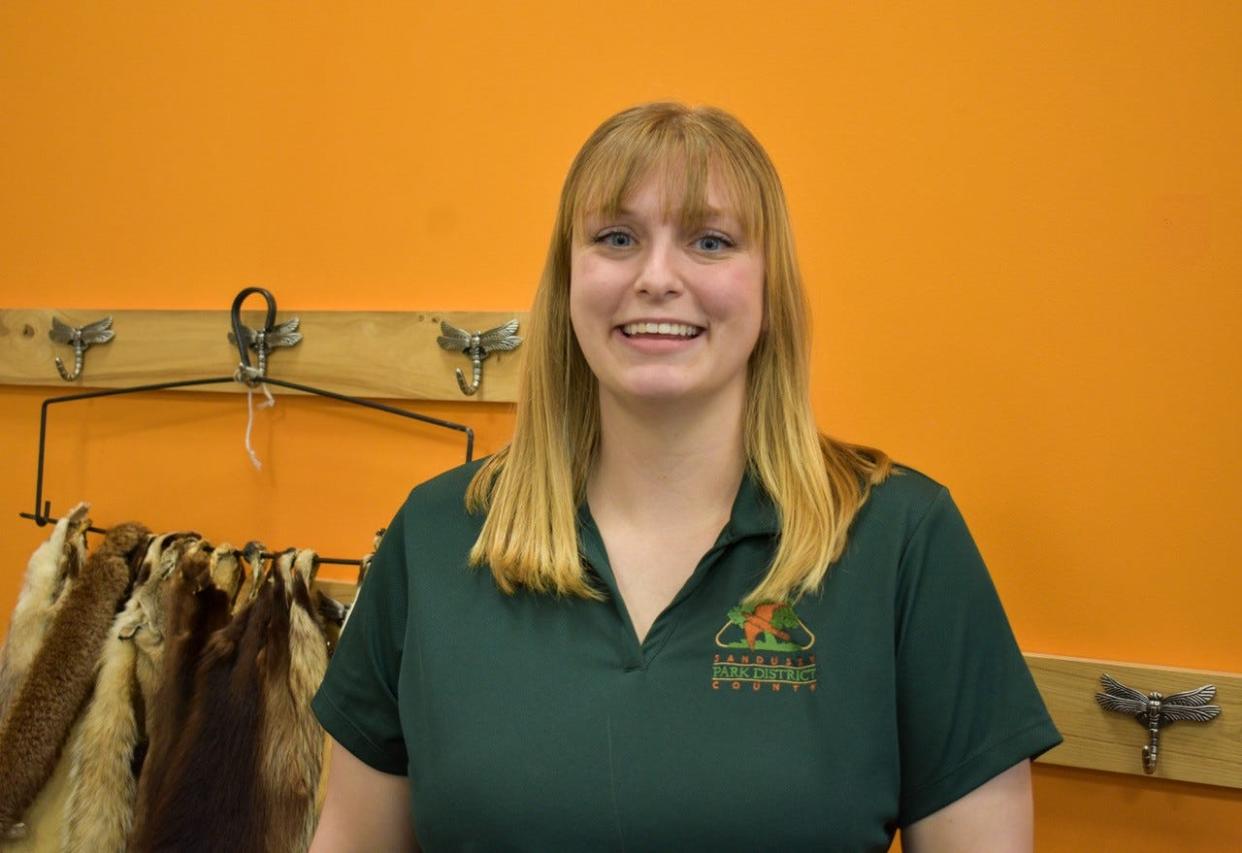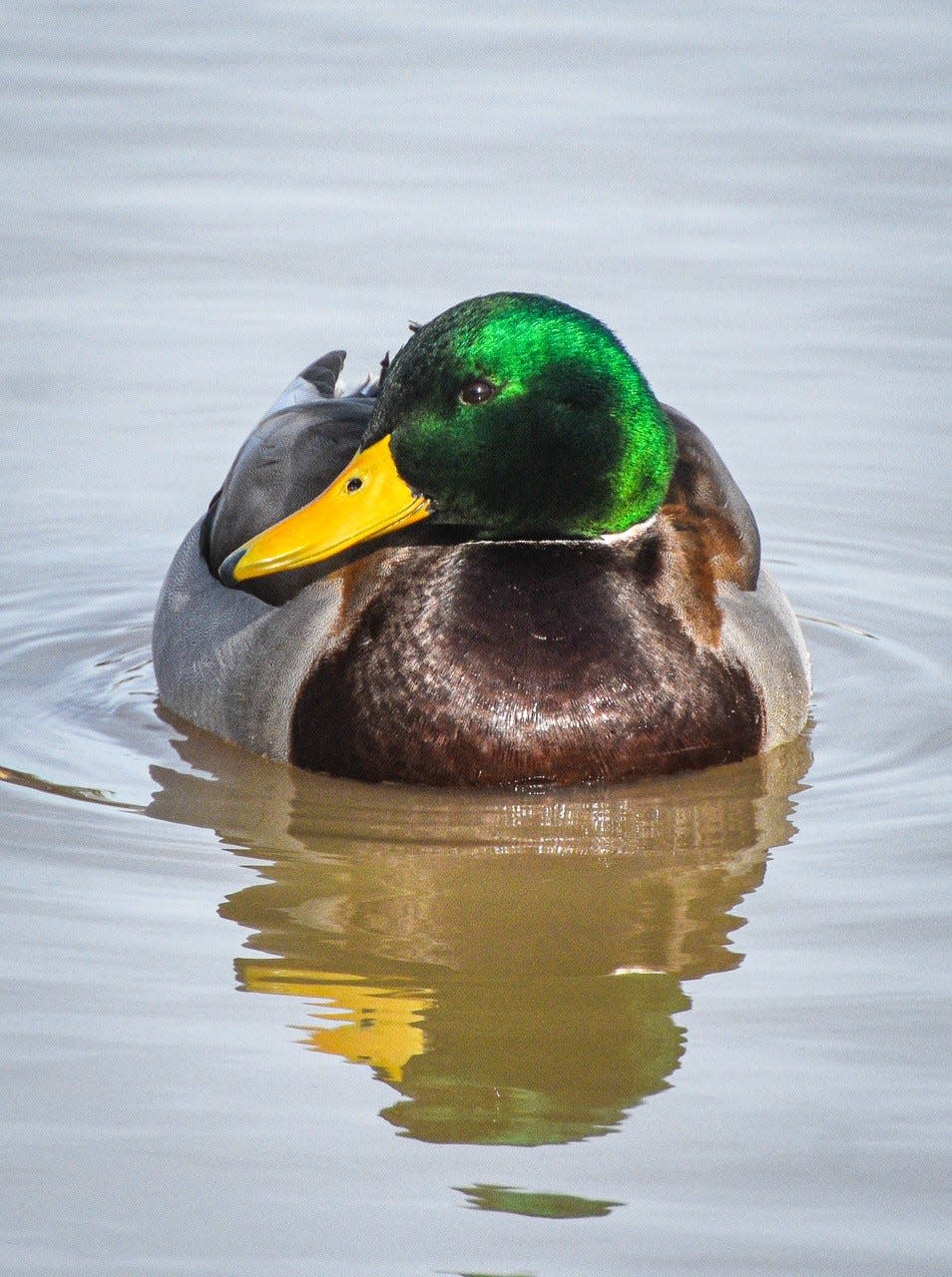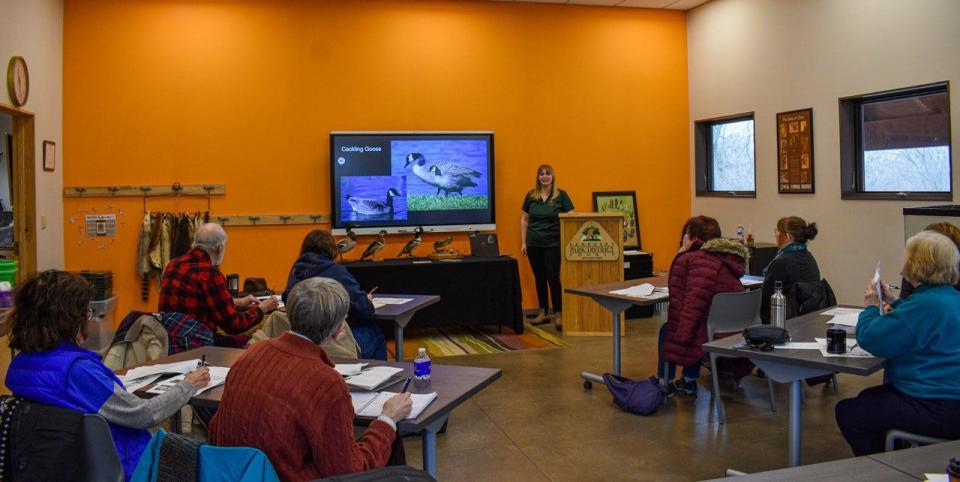Birding opportunities abound even in winter

LINDSEY - This spring, thousands of people will flock to Northwest Ohio for the annual bird migration to search for birds under the warm sun. But winter still offers an abundance of opportunities to go birding in Sandusky and Ottawa counties.
Sarah Chong, Sandusky County Park District interpretive naturalist, proved just how many winter birding opportunities are available as she taught the Winter Waterfowl ID program inside the Wilson Nature Center at Creek Bend Farm in Lindsey. During the Jan. 14 program, Chong explained how to identify the 40 different species of waterfowl that can be spotted in winter.
Chong talked about visual identifiers, but she also taught participants how to identify birds by behavior and sound.
“This was a really excellent talk because of the details,” said Suzi Michaels. “She taught us about behavior because you can’t always see field marks. I learned a lot about how they fly and what they eat and how they perch. She taught how to distinguish between similar species. She was good at that.”
Chong’s upbeat presentation included a slide show, take-home information, and surprising birding information like the fact that wood duck ducklings fling themselves from their high-in-the-trees nests on the first day after hatching.
Chong discussed the many Ohio duck species, including the well-known mallard who often interbreeds with American black ducks, making it sometimes difficult to identify them. There is, she said, a small difference in their calls.
“An American black duck’s call is a little deeper. It sounds like a mallard with a sore throat,” she said.

Chong shares details about different winter fowl
As Chong showed photos of blue-winged teals, northern pintails, buffleheads and hooded mergansers, she pointed out identifying clues such as color, beak size, head shape and position of the feet. She talked about ducks whose eyes change color and explained that diving ducks often congregate in rafts, or groups, on the water.
“You might see 20 in a raft or 2,000 in a raft because they are looking for the same type of spot in the water,” she said.
As Chong pointed out the white patch on a gadwall’s wings, she explained that placement of the color white on a duck is an important identifier in birding.
“One important strategy in identifying ducks is to ask, ‘Where’s the white?’” she said.

Throughout her talk, Chong defined several birding terms like lamellae (the tooth-like ridges in a duck’s beak that work like a sieve); dimorphism (exhibited physical differences in males and females in breeding season), and precocial (the ability of a bird to move around on its own soon after hatching).
Class shares types of bird found in Ohio
Chong said the smallest duck in Ohio is the green-winged teal, and the trumpeter swan is the heaviest living bird native to North America. She talked about the very common Canada Goose and the uncommon surf scoter, which she only saw once, when one was spotted in Marblehead.
The Winter Waterfowl ID program attracted a full classroom of birders of differing experience, including Traci Zoller of Fremont who attended the class with her son, Cody Zoller of Sandusky. Traci often sees eagles in her backyard, and she has spotted kingfishers, osprey, cormorants and other birds she doesn’t recognize.
“I came today because I live on the Sandusky River, and I see a lot of different birds and want to be able to identify them,” she said.
Although Cody no longer lives in his mother’s home, he plans to be more aware of what is flying outside when he visits.
“Growing up on the river and going out on boats, I’ve seen a lot of birds,” he said. “I’m definitely going to keep an eye out better.”
For information on more upcoming birding programs, including the first session of the Big Bird Year program on Jan. 21, visit lovemyparks.com.
Contact correspondent Sheri Trusty at sheritrusty4@gmail.com.
This article originally appeared on Fremont News-Messenger: Birding opportunities abound even in winter

